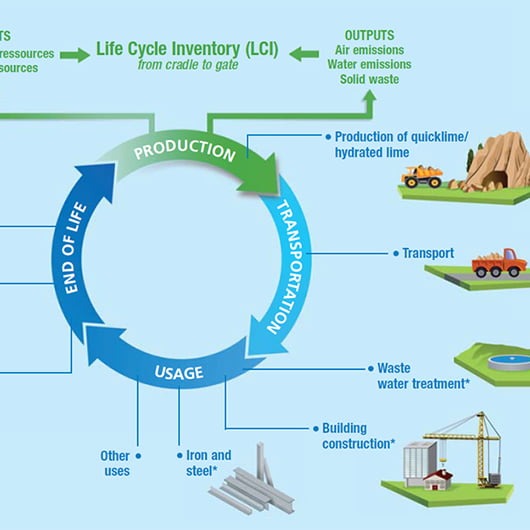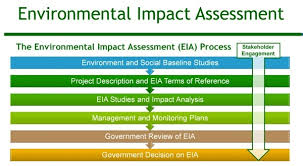

Environmental Impact Assessments (EIAs) are a critical component of the planning and execution of infrastructure projects worldwide. In Nigeria, where rapid urbanization and development are transforming the landscape, the importance of EIAs in mitigating environmental impacts cannot be overstated. This article provides a comprehensive overview of Environmental Impact Assessments for Nigerian infrastructure projects, detailing their significance, processes, regulatory frameworks, and best practices for ensuring sustainable development.
What is an Environmental Impact Assessment?
An Environmental Impact Assessment (EIA) is a systematic process used to evaluate the potential environmental effects of a proposed project before it is approved and carried out. The goal of an EIA is to ensure that decision-makers consider environmental impacts and incorporate measures to mitigate adverse effects, thereby promoting sustainable development.
The Importance of EIAs in Nigerian Infrastructure Projects
1. Ensuring Sustainable Development
As Nigeria undergoes rapid urbanization and infrastructure expansion, EIAs play a crucial role in ensuring that development projects are sustainable. By assessing potential environmental impacts, EIAs help identify and address issues such as land degradation, water pollution, and habitat destruction, promoting projects that balance economic growth with environmental preservation.
2. Regulatory Compliance
In Nigeria, EIAs are mandated by law for certain types of infrastructure projects. Compliance with EIA regulations is essential for obtaining necessary permits and approvals. Failing to conduct an EIA can result in legal consequences, project delays, and potential damage to the environment.
3. Enhancing Public Health and Safety
Infrastructure projects can have significant impacts on public health and safety, such as air and water quality concerns. EIAs assess these potential impacts and recommend mitigation measures to protect communities and ensure that projects do not pose undue risks to public health.
4. Mitigating Environmental Risks
EIAs identify potential environmental risks associated with infrastructure projects and propose strategies to mitigate these risks. This proactive approach helps prevent environmental degradation and ensures that projects are designed and implemented with minimal negative impact on the environment.
The EIA Process in Nigeria
The EIA process in Nigeria involves several key steps, each designed to thoroughly evaluate the potential environmental impacts of a project. These steps include:
1. Screening: Screening determines whether an EIA is required for a specific project based on its potential environmental impacts. The Nigerian Federal Ministry of Environment (FMEnv) and state environmental agencies use screening criteria to decide which projects require a full EIA.
2. Scoping: Scoping involves identifying the key environmental issues and impacts that need to be assessed during the EIA process. This step includes consultations with stakeholders, including local communities, environmental experts, and government agencies, to determine the scope of the assessment.
3. Impact Assessment: The impact assessment phase involves conducting detailed studies to evaluate the potential environmental effects of the project. This includes analyzing impacts on air, water, soil, flora, fauna, and human health. Data collection, modeling, and impact prediction techniques are used to assess the significance of these effects.
4. Mitigation Planning: Based on the findings of the impact assessment, mitigation measures are developed to address and reduce negative environmental impacts. This may involve redesigning aspects of the project, implementing environmental management practices, and monitoring environmental performance.
5. Reporting: The findings of the EIA are compiled into an Environmental Impact Statement (EIS), which documents the potential environmental impacts, proposed mitigation measures, and the overall conclusions of the assessment. The EIS is submitted to regulatory authorities for review and approval.
6. Review and Decision-Making: Regulatory authorities review the EIS and provide feedback. This review process ensures that the EIA meets regulatory requirements and addresses key environmental concerns. Based on this review, a decision is made regarding the approval of the project.
7. Monitoring and Evaluation: Once the project is approved and implemented, ongoing monitoring and evaluation are essential to ensure that the proposed mitigation measures are effective and that the project complies with environmental regulations. This phase involves regular inspections and reporting to assess the project’s environmental performance.
Regulatory Framework for EIAs in Nigeria
In Nigeria, the legal and regulatory framework for Environmental Impact Assessments is governed by several key statutes and regulations:
1. The Environmental Impact Assessment Act (Cap E12, Laws of the Federation of Nigeria 2004): The EIA Act establishes the legal basis for conducting EIAs in Nigeria. It outlines the requirements for screening, scoping, impact assessment, reporting, and review processes. The Act mandates that certain types of projects, particularly those with significant environmental impacts, must undergo an EIA.
2. The National Environmental Standards and Regulations Enforcement Agency (NESREA): NESREA is responsible for enforcing environmental standards and regulations, including those related to EIAs. The agency plays a key role in reviewing EIA reports, issuing environmental permits, and ensuring compliance with environmental regulations.
3. State Environmental Agencies: In addition to federal regulations, state environmental agencies are involved in the EIA process. These agencies may have their own regulations and requirements for conducting EIAs, and developers must ensure compliance with both federal and state-level regulations.
Best Practices for Effective EIAs
1. Early Engagement with Stakeholders;
Engaging stakeholders early in the EIA process is crucial for identifying potential concerns and ensuring that the assessment addresses local issues. This includes consulting with local communities, environmental organizations, and other relevant stakeholders to gather input and feedback.
2. Comprehensive Data Collection;
Collecting comprehensive and accurate data is essential for a thorough impact assessment. This includes conducting baseline studies to understand existing environmental conditions and using reliable data sources to predict potential impacts.
3. Integrated Approach;
An integrated approach to EIA involves considering environmental, social, and economic factors together. This holistic view ensures that all aspects of sustainability are addressed and that the project aligns with broader development goals.
4. Transparent Reporting;
Transparency in reporting is key to building trust and credibility. The Environmental Impact Statement (EIS) should be clear, concise, and accessible, providing stakeholders with detailed information about potential impacts and mitigation measures.
5. Adaptive Management:
Adopting an adaptive management approach involves continuously monitoring and adjusting the project to address unforeseen environmental issues. This flexibility ensures that mitigation measures remain effective and that environmental performance is optimized throughout the project’s lifecycle.
Challenges
- Compliance and Enforcement: Ensuring compliance with EIA regulations and enforcing environmental standards can be challenging, particularly in regions with limited resources and capacity.
- Public Awareness: Raising awareness about the importance of EIAs and engaging local communities in the assessment process can be difficult but is essential for effective environmental management.
- Data Quality and Availability: Access to reliable and comprehensive environmental data can be limited, affecting the accuracy and effectiveness of impact assessments.
Opportunities
- Technological Advancements: Advances in technology, such as Geographic Information Systems (GIS) and remote sensing, offer new tools for data collection and impact analysis, improving the effectiveness of EIAs.
- Capacity Building: Investing in capacity building and training for environmental professionals and regulatory authorities can enhance the EIA process and strengthen environmental management practices.
- Stakeholder Engagement: Increasing engagement with stakeholders and incorporating their input into the EIA process can lead to more comprehensive and acceptable mitigation measures, fostering greater community support for infrastructure projects.
Conclusion
Environmental Impact Assessments (EIAs) are a vital tool for ensuring that infrastructure projects in Nigeria are developed sustainably, balancing economic growth with environmental preservation. By adhering to regulatory requirements, implementing best practices, and addressing key challenges, stakeholders can enhance the effectiveness of the EIA process and contribute to more responsible and sustainable infrastructure development. As Nigeria continues to grow and develop, robust environmental management practices will play a crucial role in shaping a future that benefits both people and the environment.
· Environmental Impact Assessment (EIA) Nigeria
· Nigerian infrastructure sustainability
· EIA process in Nigeria
· Environmental regulations Nigeria
· Sustainable development projects Nigeria
· Public health and safety infrastructure Nigeria
· EIA legal framework Nigeria
· Mitigation of environmental risks Nigeria
· Stakeholder engagement EIAs Nigeria
· Compliance with environmental laws
Contact Us
Chaman Law Firm today. Our offices are conveniently located in Lagos, FCT Abuja, Ogun State, and the UK. We are readily available to assist you with your legal needs. Whether you require consultation, representation, or ongoing legal support, Chaman Law Firm is your trusted partner.
Call us at 08065553671 or email us at info@chamanlawfirm.com to schedule a consultation.

